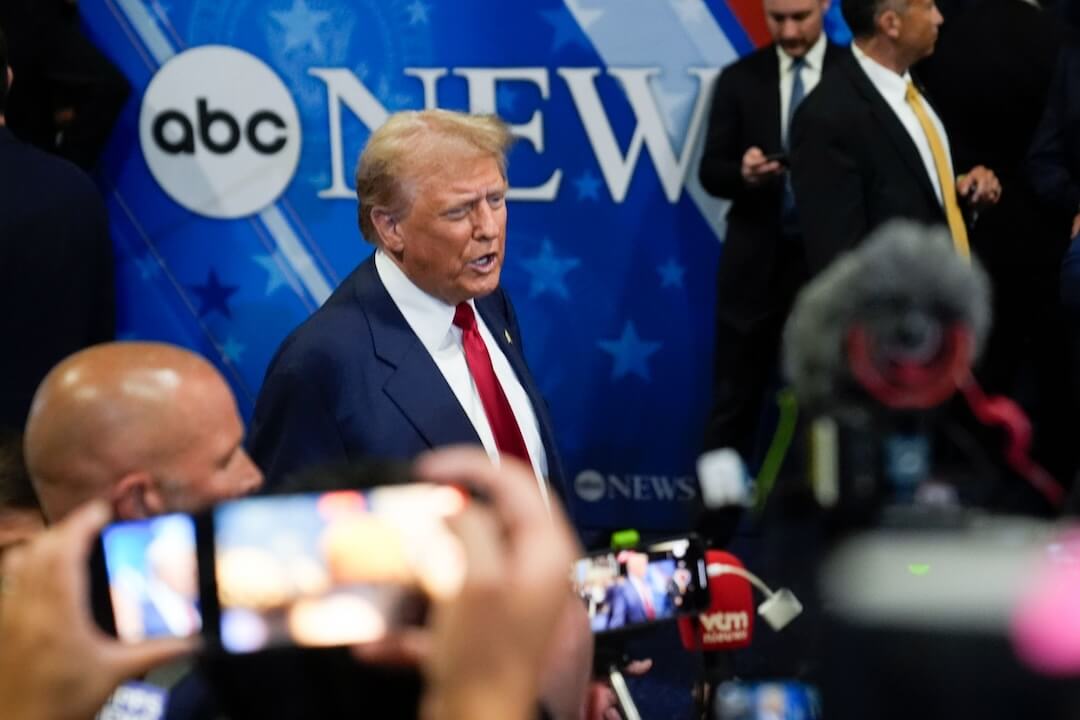For more than a decade, the McClatchy family has resolutely kept the newspaper company bearing its name afloat and independent despite a crushing debt load.
The tough financial hand McClatchy's board and executives have been dealt is getting even tougher with a terrible year for the industry unfolding and another expected in 2019.
McClatchy stock has lost almost all its value to investors. Its market capitalization (the number of shares multiplied by share price) sits at $69 million, lowest of the seven public newspaper companies.
At the same time, refinancing of the company's $794 million debt earlier this year consolidated more lending control in the hands of a longtime creditor, the private Chatham Asset Management hedge fund.
RELATED ARTICLE: Letter to the Editor: Progress in digital transformation at McClatchy
Since October 2017, Chatham has also been assembling large blocks of McClatchy stock. The fund is now the company's biggest institutional shareholder with about a 20 percent stake.
Except for repeated rounds of newsroom layoffs, the financial squeeze has little impact on the hundreds of McClatchy journalists at its 30 papers. They continue to do Pulitzer-worthy work year after year. This week the company's journalists will be tested, providing coverage of the hurricane headed to North Carolina and South Carolina, where McClatchy papers dominate.
The financial hazard for the company is that a turn for the worse — a recession, for instance — could force reluctant family owners to consider bankruptcy reorganization (thus shedding the debt) or a sale or breakup.
McClatchy CEO Craig Forman declined to be interviewed for this article. Board Chairman Kevin McClatchy could not be reached for comment, and no one answered the phone at Chatham's offices in Chatham, New Jersey.
Here are some financial particulars all from the reporting required of public companies, as shown in the above chart.
- McClatchy is valued at a small fraction of the big public companies, led by The New York Times at $3.8 billion (55 times as much). Smaller companies — Lee Enterprises with 40 dailies, mostly small and mid-sized, and A.H. Belo with just The Dallas Morning News — are judged by Wall Street to be worth more.
- The $794 million total debt is more than 10 times McClatchy's market capitalization. That is by far the worst debt-to-equity ratio among the group. Plus it is higher than the total debt of the much larger public newspaper companies.
- McClatchy shares have been trading lately at a little under $9 a share. However, the company did a so-called "reverse stock split" in 2016. So 10 shares valued at $1.14 each would be exchanged for one share worth $11.40. On a comparative basis then, the stock, which once traded in the $70-plus range, is worth 90 cents a share — penny stock territory. (Wall Street responded positively to the stock split move, as I wrote at the time.)
- Over the past decade, McClatchy has made huge progress in reducing the debt it took on when it bought the larger Knight Ridder chain in 2006. From $2.6 billion in 2007, the debt burden is down to less than $1 billion. But to get there, the company has had to plow back a big share of earnings every quarter to interest payments and paying down the principal of the debt.
The current $794 million debt — a third of what it once was — appears to be more manageable. But McClatchy has become a much smaller company, so there is a tight margin between revenues and expenses. Also, McClatchy lacks a non-news growth business like Gannett's Reach Local digital marketing and ad placement subsidiary or Belo's collection of Dallas ad agencies.
Forman is a former Wall Street Journal reporter turned tech investor and executive. He joined McClatchy's board in 2013. When former CEO Pat Talamantes was let go in early 2017, Forman was named his successor.
From the start, Forman has pursued a consistent strategy of picking up the pace of digital transformation. His lieutenant, Vice President of News Tim Grieve, visited each of the 30 newsrooms in 2017 and the early months of this year. Grieve, with an accompanying "reinvention team," aimed to get every editor and reporter focused on stories that attract readers, shedding some conventional coverage that no longer has a following.
The new regime's program has increased digital traffic and digital-only paid subscriptions to a modest 122,400, a little more than 4,000 per title. But with print circulation revenue as well as and print advertising now falling, Forman's initiatives have yet to have a commensurate financial payoff.
Chatham's stock purchases, reported in Securities and Exchange Commission filings, began with successive buys of millions of dollars worth of shares last October. Chatham's most recent trade, reported Aug. 31, was for just $29,000, but that was treated as a reportable addition to Chatham's stake.
In refinancing the debt, McClatchy gathered in loans from other banks under a new group of bonds put together by Chatham with due dates extended to 2026 and well beyond. The average interest rate remains roughly 8 percent.
In the most recent earnings conference call with analysts, treasurer and chief financial officer Elaine Lintecum described the refinancing as a success:
"We have in Chatham, a very long-term investor who understands the business and who was ready to expand their investment in the Company to assist us in the refinancing now. … As a 30-year financial professional, I've learned that when investors are ready to invest, that's the time to engage and that was the case for McClatchy this summer with Chatham as well as other investors."
Lintecum and Forman are right that as long as Chatham is happy, the company meets its interest payments and other loan covenants, and the family remains committed, the arrangement could continue to work indefinitely.
The 30 newspapers — including the Miami Herald, The Kansas City Star and The News & Observer of Raleigh — are profitable and in no danger of going out of business. A potential buyer would need to come up with not only the $69 million for the stock but assume the debt as well (and there are pension liabilities in the mix).
The cupboard has gotten bare of real estate or ownership stakes in other businesses that McClatchy could sell to raise cash. Borrowing to buy other papers to achieve economies of scale as Gannett and New Media/GateHouse have done, appears not to be in the cards. (McClatchy's stable has been nearly unchanged for a decade with just the sale of the Anchorage Daily News in 2014 and purchase of the Durham Herald Sun in late 2016.)
The McClatchy family got into the newspaper business with The Bee of Sacramento in 1857. The family maintains control of the company because it has two classes of stock; their B shares would override what public A shareholders might want should there be a conflict. Four family members sit on the board, otherwise largely made up of tech executives.
This is the same arrangement that gives the Sulzberger family control of The New York Times Co. Their hold on the 150-year-old Times was tested in the sharp 2008-2009 downturn and required a high-interest loan and investment from Mexican billionaire Carlos Slim Helu to get through. Lately, with robust digital subscription growth and a stream of new products, the Times is back on a healthy financial track.
Conversely, I and other analysts thought that the Graham family had a forever commitment to keeping The Washington Post. But five years ago, CEO Don Graham and his niece, publisher Katharine Weymouth, decided they did not have a strong strategy or the capital to finance a next wave of growth. So they sold to Jeff Bezos.
If the McClatchys can't outrun the math, that day could come for them, too.
Correction: The original version of this story had the wrong year for McClatchy's founding and the wrong date for when the first of their newly reorganized debt comes due.







